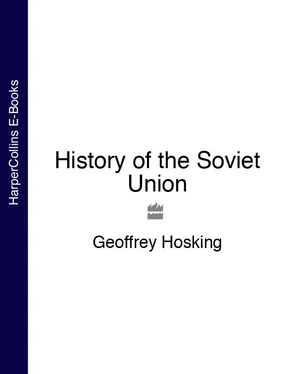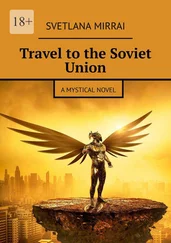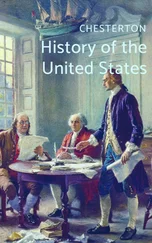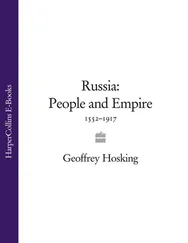The fall of the Central Asian Khanates of Khiva and Bukhara during 1920 brought more recruits to these irregular armies, and a new element of political organization and coordination was injected the following year by the arrival of Enver Pasha, former leader of the Young Turk government in Istanbul. Ironically, he had come determined to convert the Muslims of Turkestan to the cause of communism: what he saw there changed his mind completely, and he began planning the overthrow of Bolshevism and the establishment of Turkestan as a base for an international pan-Turkic state. He made considerable progress towards the formation of a unified army with its own, partly Turkish, officer corps. He regularized communications with the Afghans who, long accustomed to anti-Russian resistance from tsarist days, were supplying the Basmachi with arms and affording them asylum.
By 1921 the Communist government had realized that the Basmachi posed a serious threat to their control of Central Asia. They began to send in European Red Army troops, with aerial support, and they devoted an all-out effort to the capture of Enver Pasha. In this they succeeded, capturing and killing him in August 1922.
As in their treatment of the Tambov peasant revolt, the Communists combined repression with a degree of appeasement. In May 1922 they restored waqf land to the mosques, reinstated the sharia courts and relegalized the Koranic schools. At least for a time they were prepared to compromise with Islam in its traditional forms (while turning against Islamic reformism and socialism).
This combination was quite successful. Popular support for the partisans dwindled sharply from 1922, and was largely confined to the mountainous regions thereafter, at least until it revived with compulsory collectivization of agriculture (see below), which once again entailed a direct assault on Islamic values and institutions.
By the beginning of 1921 the territorial and national composition of the new Soviet Russia was becoming clearer. Lenin had hoped, of course, for a worldwide union of Soviet republics, but with the collapse of the short-lived Bavarian and Hungarian Soviet regimes, and the defeat of the Red Army in Poland, this vision had receded.
The Communists found themselves the masters of ethnic Russia–now called the RSFSR (Russian Soviet Federative Socialist Republic)–surrounded by a network of theoretically independent Soviet republics, whose territory covered approximately the same area as the former tsarist empire, with the significant exceptions of Finland, Poland and the Baltic area.
The Soviet republics now within the Russian sphere of influence were of two types. There were those on the borders (later to be known as ‘union republics’), which had known at least a period of genuine independence during the turmoil of 1917–21, and had established diplomatic relations with foreign powers: these were the republics already mentioned in this chapter. Then there were the republics surrounded by Russian territory, known as ‘autonomous republics’, the largest of which were Tatarstan and Bashkiria, which had never been in a position to exercise any real sovereignty. The situation of these ‘autonomous republics’ was fairly straightforward from Moscow’s point of view: they were permitted their own governmental bodies (people’s commissariats), but subordinate to those in Moscow, while their local Communist Party organizations were equivalent to those of the Russian provinces. The border republics, however, posed greater problems. They had been led to believe that they would be able to exercise genuine self-determination, and all of them had done so, at least briefly, during 1917–21, notably Georgia, whose new Communist rulers proved almost as anxious to assert the nation’s self-government as their Menshevik predecessors.
With these republics–Ukraine, Bielorussia, Georgia, Armenia, Azerbaidjan, Bukhara, Khoresm (formerly Khiva) and the Far Eastern Republic–Soviet Russia concluded bilateral treaties which varied somewhat from one another, and were highly ambiguous in form. In some respects they were worded like treaties with separate sovereign states, yet in others they were more like articles of federation: they reflected, in fact, the ambiguities of ‘proletarian internationalism’. They began as military treaties, offering guarantees in case of external attack; but the military clauses were supplemented by economic ones, which placed decisive authority in most economic matters in the hands of organizations in Moscow. Anomalously, some of the republics actually retained a separate diplomatic service, and foreign representation, for a year or two, but this was lost when the RSFSR claimed and secured the right, in 1922, to negotiate for all the republics at the European conference of Genoa.
These anomalies and ambiguities could not last for long. Already during the civil war, the population of the border republics had mostly become accustomed to accepting the authority of certain centralized institutions controlled from Moscow: Sovnarkom, the Red Army, the Council of Labour and Defence (which since November 1918 had coordinated the civilian war effort) and the Revolutionary Military Council of the Republic (the political branch of the army). Except in the special case of Georgia, it did not stretch custom and expectation too much to extend and formalize these arrangements and establish a unitary Soviet Russian Republic containing all these disparate political entities.
That was precisely what Stalin, as people’s commissar for nationalities, had in mind. He wanted to see a political framework which would give expression to the dominance Russia had assumed in the world revolutionary movement. As one delegate at the Tenth Party Congress proudly declared: ‘The fact that Russia had first entered on the road of revolution, that Russia had transformed itself from a colony–an actual colony of Western Europe–into the centre of the world revolutionary movement, this fact has filled with pride the hearts of those who have been connected with the Russian revolution, and has engendered a peculiar Red Russian patriotism.’
This process might have been accomplished unproblematically had it not been that Lenin himself became concerned by the Russian nationalist implications of Stalin’s project, as exemplified in such speeches. His fears were deepened when Stalin and his local lieutenant, Sergei Ordjonikidze, came into conflict with the Georgian Bolshevik leaders, Budu Mdivani and Filip Makharadze, over the place of Georgia in the new state. Stalin wanted Georgia to enter the proposed new republic merely as part of a ‘Transcaucasian federation, which would also include Armenia and Azerbaidjan. Mdivani and Makharadze objected vehemently to this downgrading of their homeland. Lenin eventually gave his blessing to Stalin’s scheme, but during an argument on the subject, Ordjonikidze became very heated and actually struck one of Mdivani’s followers. Lenin was incensed at this uncouth behaviour, which confirmed his worst fears about Stalin, and he ordered an investigation into the incident; but he suffered his third and most serious stroke before it could be completed, and was never able to intervene effectively and ensure that the lessons of the incident were absorbed.
He did, however, prepare a memorandum on the national question for the forthcoming Twelfth Party Congress: it was suppressed by Stalin (with the scarcely explicable connivance of Trotsky), and did not come to light until 1956. In it Lenin recognized that ‘self-determination’, embodied in the theoretical right to secede from the Soviet state, had been reduced in practice to ‘a scrap of paper’, and that as a result the minority nationalities were in danger of being delivered up to ‘this 100 per cent Russian phenomenon, Great Russian chauvinism, which is characteristic of the Russian bureaucracy’. He demanded ‘exemplary punishment’ for Ordjonikidze, to demonstrate that this would not be tolerated, and recommended that the Soviet constitution should guarantee real governmental power to the minority nationalities, in the form of people’s commissariats for all except diplomatic and military matters, as well as enshrining in an explicit code the right to use local language.
Читать дальше












